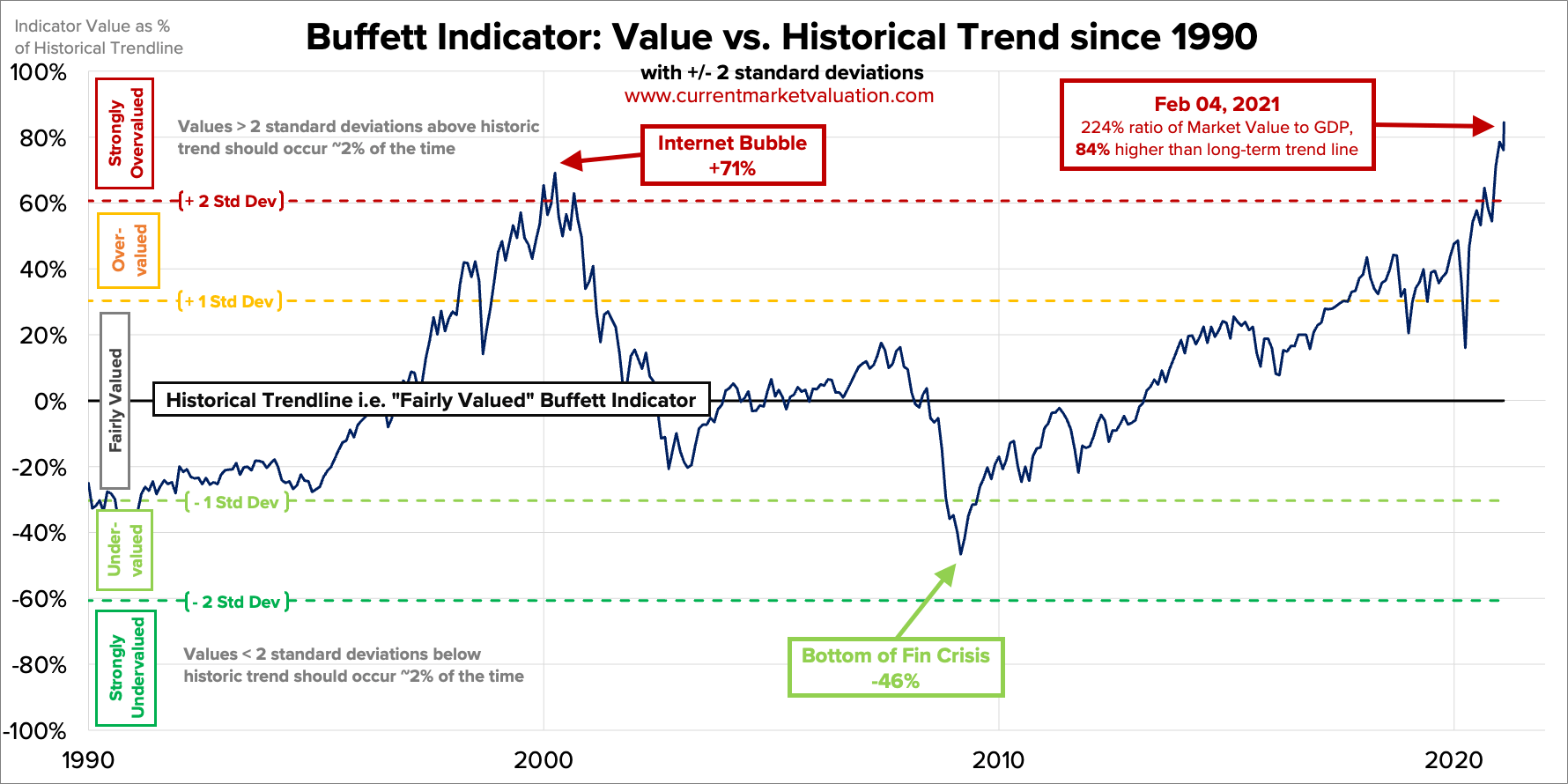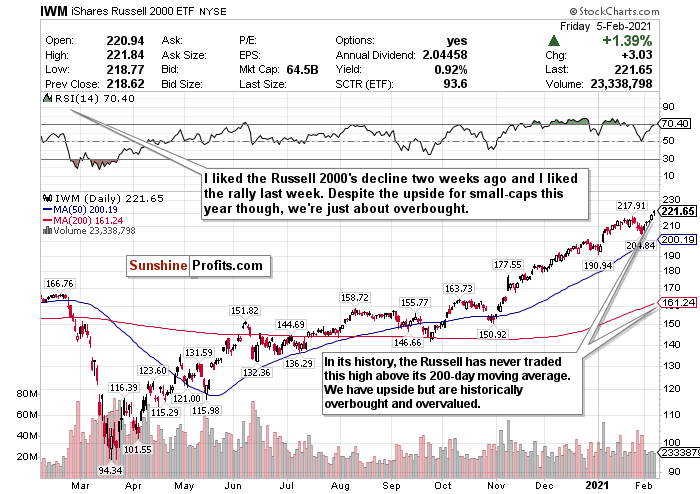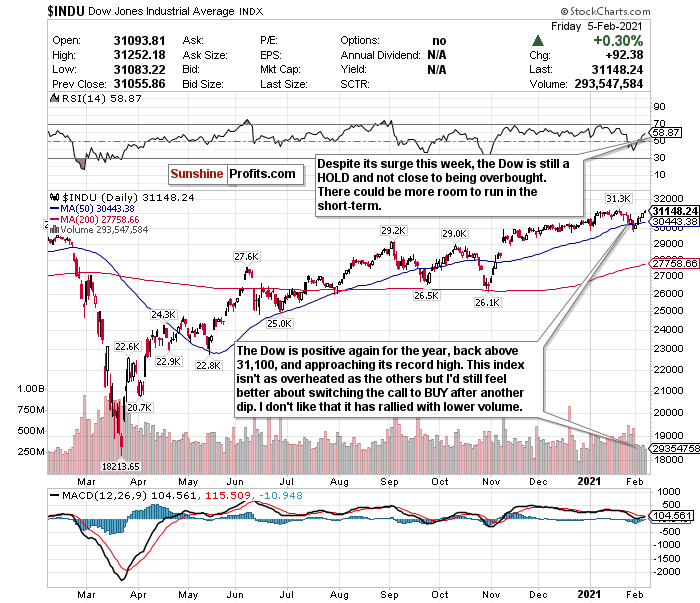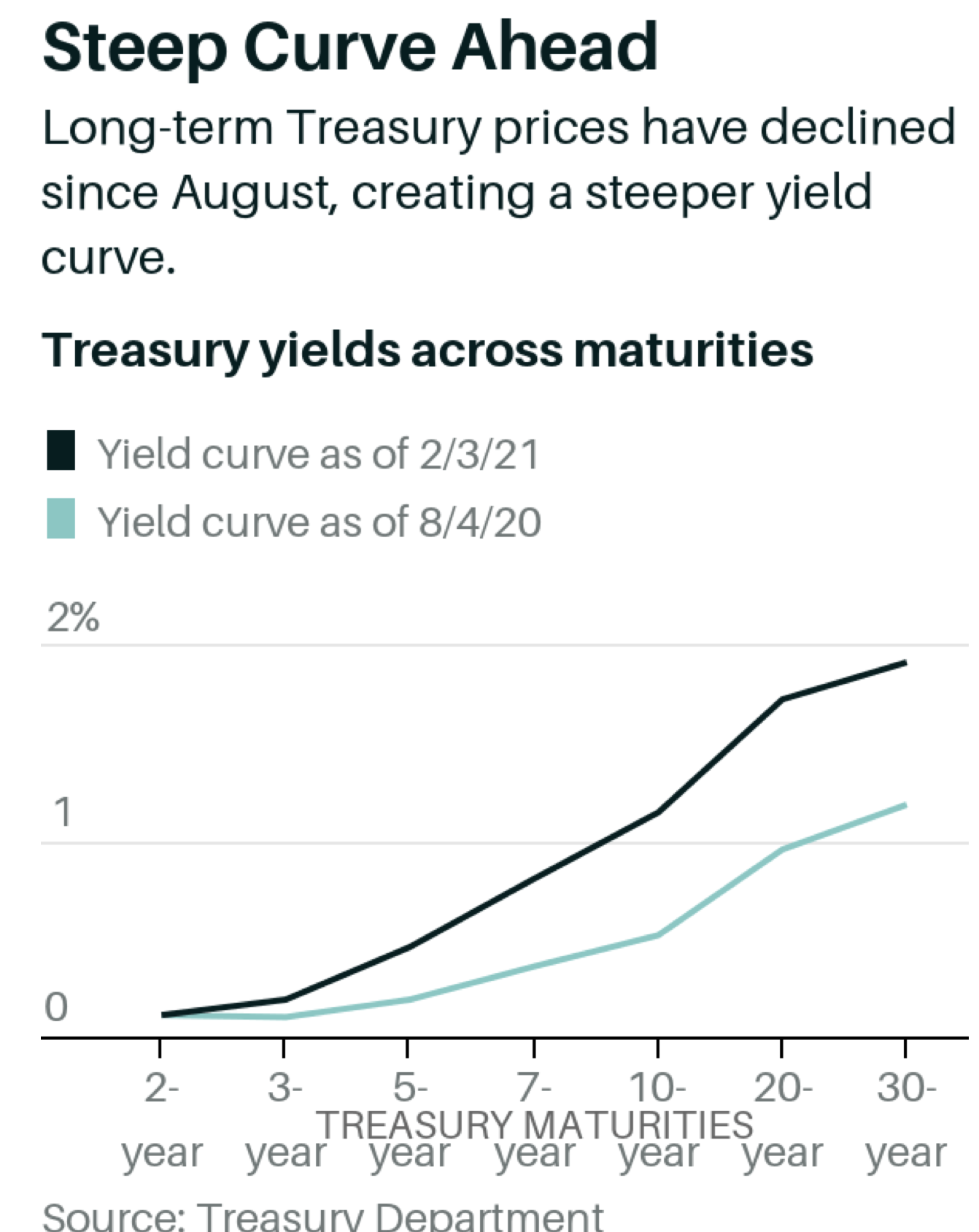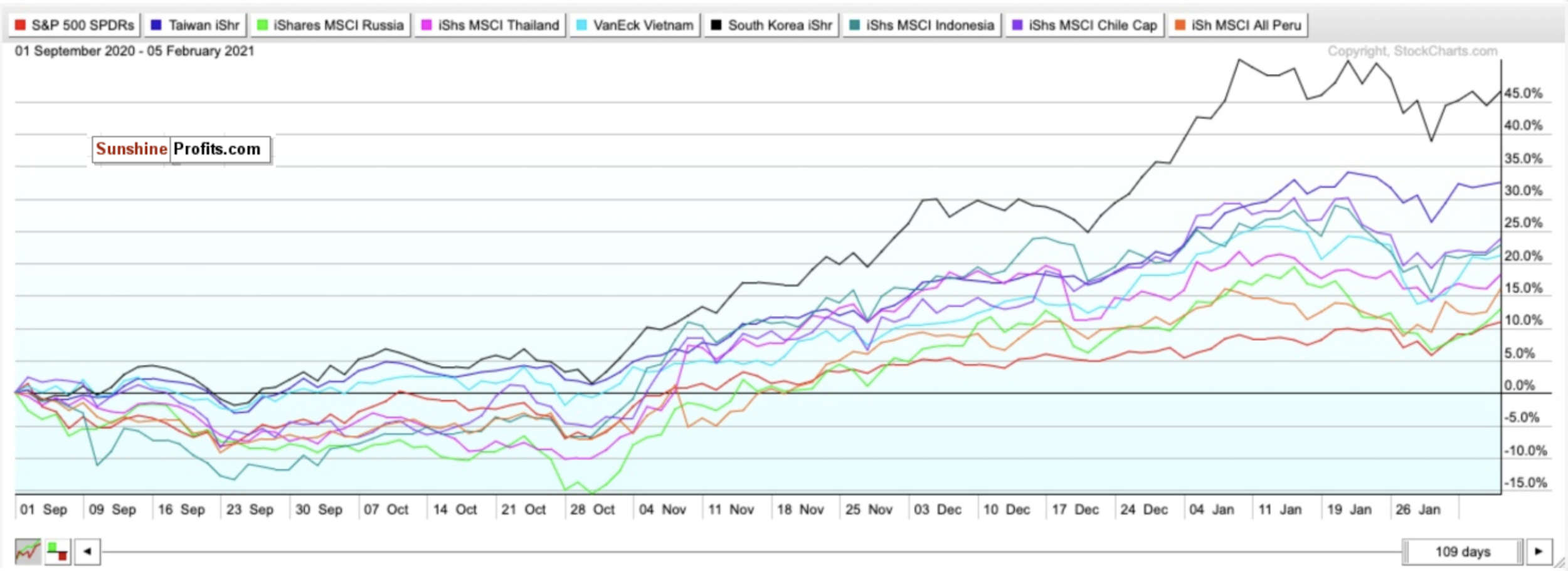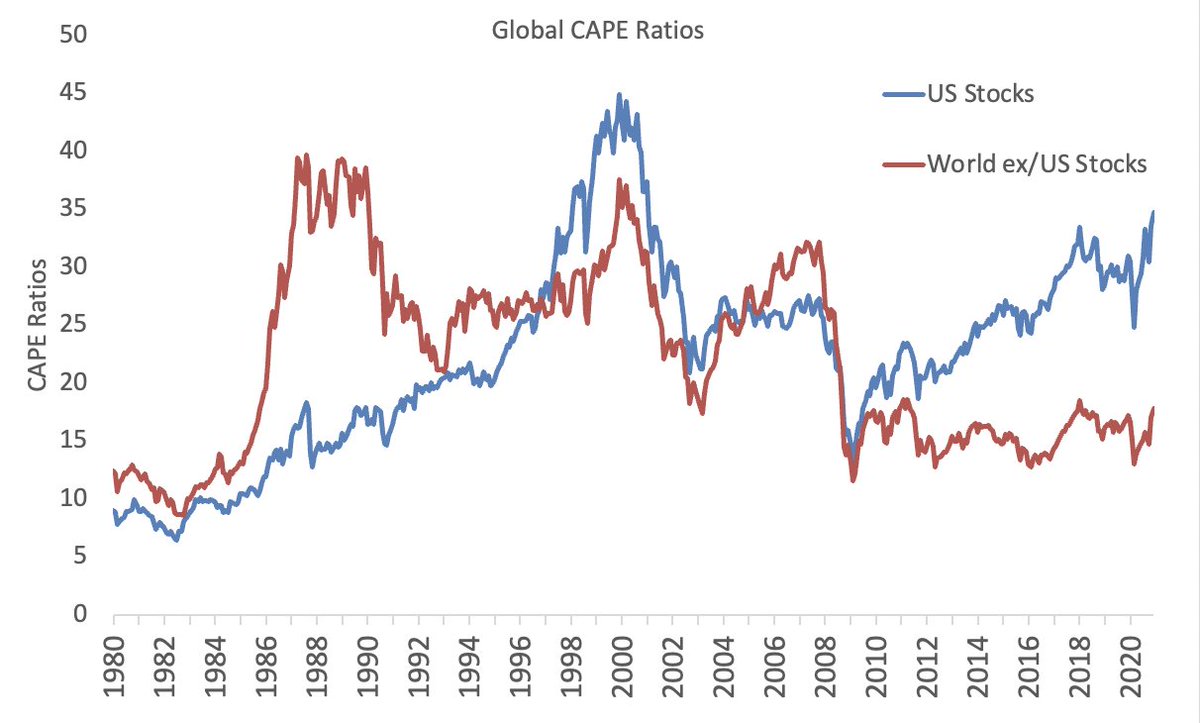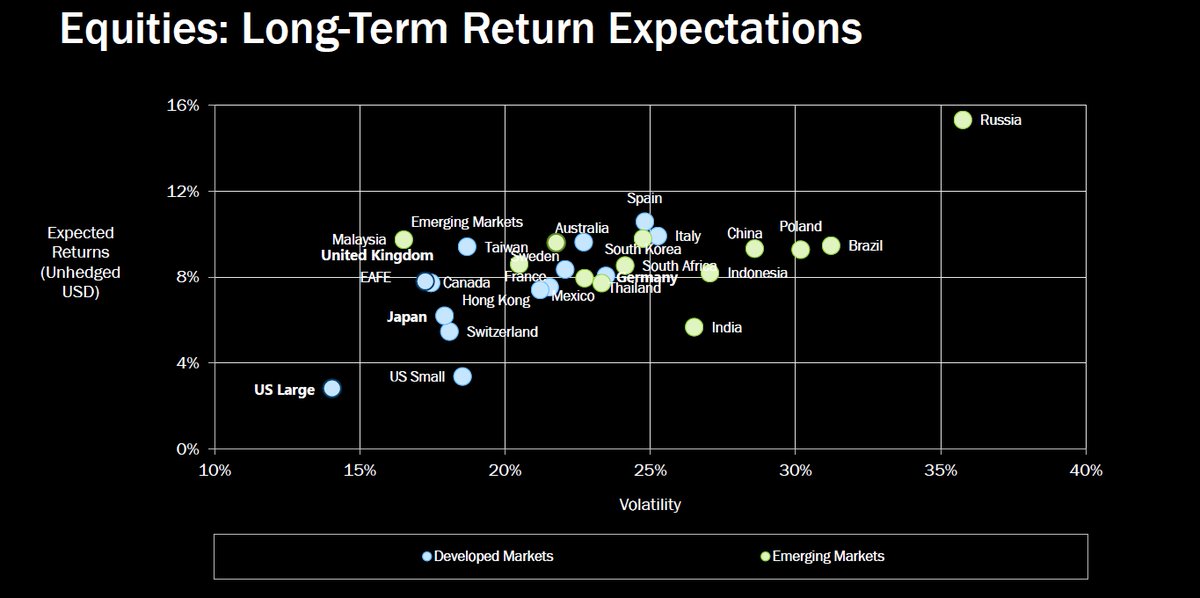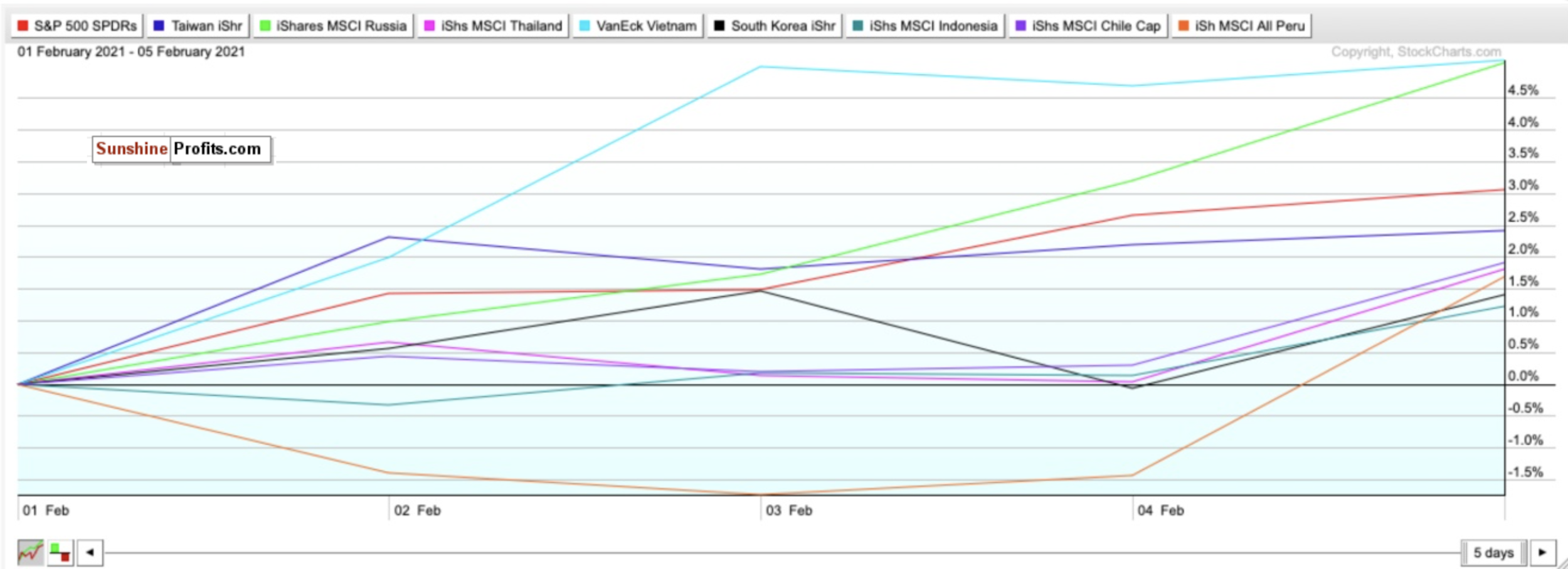What a difference a week can make.
One week, Reddit bandits take on hedge funds and win, pumping up stocks like GameStop and AMC while the broader market sees its worst decline since October.
The indices then see their most significant gains the next week since Joe Biden's election victory and don't see a down day all week.
Now we're here- still amid a tug of war between sentiments. For now, though, things are looking rosy. That is, of course, unless you're Patrick Mahomes this morning.
Can the market keep up it’s winning streak this week? It’s possible. But I’d be surprised if we don’t see at least one sharp pullback before this Friday (Feb. 12).
Can the market keep up its winning streak this week? It's possible. But I'd be surprised if we don't see at least one sharp pullback this week.
Despite tailwinds moving the markets right now, such as stimulus progress, an ever-improving vaccine delivery, the possibility of an effective one-dose vaccine from Johnson and Johnson (JNJ), falling COVID numbers, and an improving economic outlook based on consistently falling jobless claims and corporate earnings that continue to crush, I want you to be wary of complacency and overvaluation.
Yes, I know I keep saying this. I also know that earnings are on pace to rise by over 20% in 2021. Since 1980, only 12 years have earnings increased by 15% or more. Except for 2018, the market gained an average of 12% in all of those years.
But consider some valuation metrics that scream “bubble.”
As of February 4, 2021, the Buffett Indicator, or the ratio of the total US stock market valuation to the GDP, was at a level not seen since the dotcom bubble. If you take the US stock market cap of $48.7 trillion and the estimated GDP of $21.7 trillion, we're nearly 224% overvalued and 84% above the historical average.
With the S&P 500, Nasdaq, and Russell 2000 all currently trading at record closes, fears of a bubble are genuine. The S&P 500’s forward 12-month P/E ratio is back to above 22 and well above the 10-year average of 15.8. The Russell 2000 is also back at a historic high above its 200-day moving average. Tech stock valuations are also approaching dot-com bust levels.
Yes, the outlook is healthy and for good reason. According to a recent Bank of America survey of 194 money managers, bullishness on stocks is at a three-year high, and the average share of cash in portfolios, a sign of protection from market turmoil, is at its lowest level since May 2013.
But always remember that when the market gets what it expects, and we’re expecting strength by mid-year, it’s usually a time to sell rather than buy.
While I don’t foresee a crash like we saw last March, I still maintain that some correction before the end of Q1 could happen.
Corrections are healthy and normal market behavior, and we are long overdue for one. They are also way more common than most realize. Only twice in the last 38 years have we had years WITHOUT a correction (1995 and 2017).
A correction could also be an excellent buying opportunity for what could be a great second half of the year.
My goal for these updates is to educate you, give you ideas, and help you manage money like I did when I was pressing the buy and sell buttons for $600+ million in assets. I left that career to pursue one where I could help people who needed help, instead of the ultra-high net worth.
With that said, to sum it up:
While there is long-term optimism, there are short-term concerns. A short-term correction between now and the end of Q1 2021 is possible. I don't think that a decline above ~20%, leading to a bear market will happen.
Hopefully, you find my insights enlightening. I welcome your thoughts and questions and wish you the best of luck.
Five Days in a Row and Counting for the S&P 500... 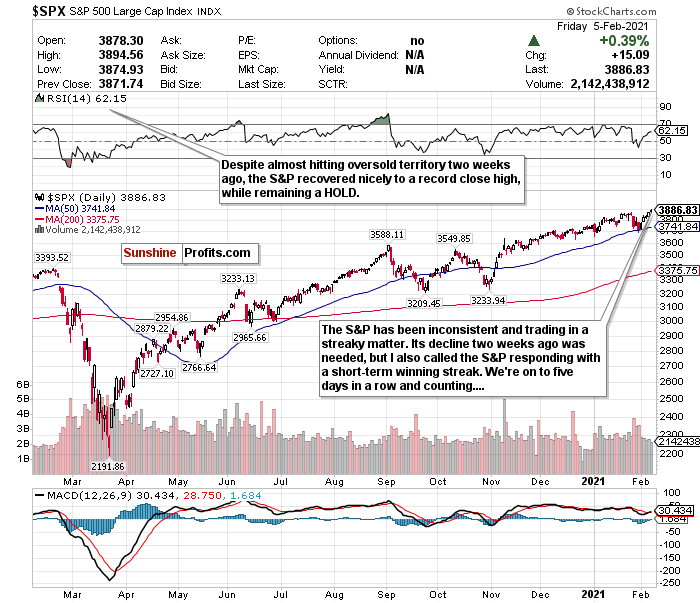
Figure 1- S&P 500 Large Cap Index $SPX
Have you ever rooted so hard for a team that can frustrate and excite you at the same time? Rip off a 4-day winning streak, followed by a slump of losing 5 out of 6 games, then come back with another 5-day winning streak? Does it have you questioning if the team is outstanding or a mirage?
If I could compare the S&P 500 to a team, it would probably be the Philadelphia 76ers.
This index looks like a winner and seemingly rips off multiple-day winning streaks every single week. Now and then, though, it can show inconsistency, make you scratch your head, and go on a frustrating losing streak.
Three weeks ago, the S&P was hovering around a record-high. Its forward P/E ratio was the highest since the dotcom bust, and the RSI consistently approached overbought levels.
Two weeks ago, it was nearly oversold.
Last week, its RSI ticked back above 62, ended the week with consecutive days of record closes, and saw a 5-day winning streak.
We’re also at a forward 12-month P/E ratio of over 22 and well above the 10-year average of 15.8.
What could be on tap for this week? Who even knows anymore. But if earnings keep on outperforming, and the sentiment remains stable, it could be another strong week.
Consider this though. The S&P has traded up and down weeks for roughly the last 4 weeks.
I said before that once the S&P approaches a 3600-level, we can start talking about it as a BUY. Despite last week’s rally, short-term concerns remain, with medium and long-term optimism.
To me, because of the RSI and how the index has traded, it remains a HOLD.
A short-term correction could inevitably occur by the end of Q1 2021, but for now, I am sticking with the S&P as a HOLD.
For an ETF that attempts to directly correlate with the performance of the S&P, the SPDR S&P ETF (SPY) is a good option.
What’s Next for Small-Caps?
Figure 2- iShares Russell 2000 ETF (IWM)
The Russell 2000 small-cap index, as tracked by the iShares Russell 2000 ETF (IWM), declined over 4.3% two weeks ago. A pullback like that is needed if you gain over 45% since October 30th and nearly double the returns of an index like the Nasdaq, largely considered to be red hot, in that same time frame.
Since the close on January 29, the Russell has once again outperformed all the other major indices, and gained over 7.8%. It’s also up over 14.5% year-to-date and outperforming the larger indices.
Small-caps are funny. They either outperform and underperform and are easily swayed by the news. While I foresaw the decline two weeks ago coming for over a month, I remain bullish due to aggressive stimulus which could be put in motion this week.
I love small-cap stocks for the long-term, especially as the world reopens and this Biden agenda gets put in motion. But the index is once again overbought.
I’m not quite ready to switch my call to a SELL again, because I think small-caps could have a big week. But it the RSI moves any further above 70, I will likely switch my call back to a SELL. I want to BUY small-caps more than anything, but I need to see another sharp decline similar to what we saw two weeks ago. The index has also never traded this high above its 200-day moving average in its entire history.
HOLD, but if there is a deeper pullback, BUY for the long-term recovery. If it overheats again this week, SELL and take profits.
The Dow Has Momentum on Its Side Again
Figure 3- Dow Jones Industrial Average $INDU
The Dow has momentum on its side. But what makes it even more attractive than the other indices, despite being a relative laggard thus far in 2021, is it’s comparatively undervalued.
After its downturn two weeks ago, the Dow was by far the index closest to oversold and in BUY territory. It saw a decline in 6 of 7 days and briefly saw its RSI plummet to a sub-40 level.
Since last week though, it has seen considerably more momentum, returned to positive territory for the year, and recovered all of its losses and then some.
Even better? It’s still not at a record high like the other 3 indices while it still has a similar type of long-term upside.
If you want to start initiating positions, go ahead. It’s at a solid entry point, especially considering that many analysts call for it to end the year at 35,000.
From my end, though, I still have some short-term questions and concerns and feel like the Dow could see another pullback.
My call on the Dow stays a HOLD, but this could change soon.
For an ETF that looks to directly correlate with the Dow's performance, the SPDR Dow Jones ETF (DIA) is a strong option.
Beware of Inflation
Outside of complacency and an overvalued market, my biggest concern has to be inflation.
Last Thursday (Feb. 4), the President of the Federal Reserve Bank of Kansas City, Esther George, told Bloomberg News that the Fed was still “far away” from achieving its goals, and that it was too soon to discuss scaling back its unprecedented massive bond-buying program.
Pay very close attention to the possible return of inflation by mid-Q2 or Q3.
George’s statement confirms that the Fed will allow the GDP to heat up and possibly overshoot in the medium-term. An aggressive stimulus could take effect this week too.
We will see what happens to GDP growth by the end of Q1 2021, but I no longer think it will sputter as much as I previously thought.
If at all.
Jobless claims continue to fall and beat estimates, and the most recent Department of Labor Report indicated that we could very well be on the road to recovery.
Pay close attention to what happens to the price of milk by Q2 and Q3 once vaccines begin to roll out on a massive scale. I’m not opposed to hiking the minimum wage, but when you keep printing money, hold interest rates this low, and let the GDP heat up unchecked, inflation will inevitably return.
The steepening of the yield curve reflects this too and is the steepest it’s been in years. Long-term Treasury yields have risen faster than shorter-term yields, and could be a sign that Wall Street is betting on a speedier economic recovery compounded by inflation.
The 10-year breakeven rate reflects inflation risk as well.
If you are looking to the future to hedge against inflation, look into TIPS, commodities, gold, and potentially some REITs.
In the mid-term, I have BUY calls on the SPDR TIPS ETF (SPIP), the Invesco Optimum Yield Diversified Commodity Strategy No K-1 ETF (PDBC), and the iShares Cohen & Steers REIT ETF (ICF).
Mid-Term/Long-Term
Taiwan, South Korea, and More for Best Emerging Market Exposure
Figure 4- SPY, EWT, ERUS, THD, VNM, EWY, EIDO, ECH, EPU comparison chart- Sep. 1, 2020-Present
Since September, the SPDR S&P 500 ETF (SPY) has gained around 11%. When you compare that to my top emerging market picks for 2021, it has underperformed.
When you compare the CAPE ratio to U.S markets to the rest of the world, this also seems like an awfully low bang for your buck.
The CAPE ratio takes real earnings per share (EPS) over ten years and smooths out fluctuations in corporate profits that can always occur throughout different business cycles. It’s also known as the Shiller P/E ratio.
Consider this too.
A surge in commodity prices due to a weakening dollar combined with shifting demographics could send emerging markets upwards in the long-term too.
PWC also believes that emerging markets (E7) could grow around twice as fast as advanced economies (G7) on average in the coming decades.
For 2021, the following are my BUYs for emerging markets and why:
iShares MSCI Taiwan ETF (EWT)- Developing country, with stable fundamentals, diverse and modern hi-tech economy, regional upside without China’s same geopolitical risks.
iShares MSCI Thailand ETF (THD)- Bloomberg’s top emerging market pick for 2021 thanks to abundant reserves and a high potential for portfolio inflows. Undervalued compared to other ETFs.
iShares MSCI Russia Capped ETF (ERUS)- Bloomberg’s second choice for the top emerging market in 2021 thanks to robust external accounts, a robust fiscal profile, and an undervalued currency. Red-hot commodity market (a big deal for a declining dollar), growing hi-tech and software market, increasing personal incomes. Compared to many other developed and emerging markets, Russia could have more than a 35% upside for its equities in the long-term as well.
VanEck Vectors Vietnam ETF Vietnam (VNM)-Turned itself into an economy with a stable credit rating, strong exports, and modest public debt relative to growth rates. PWC believes Vietnam could also be the fastest-growing economy globally. It could be a Top 20 economy by 2050.
iShares MSCI South Korea ETF (EWY)- South Korea has a booming economy, robust exports, and stable yet high growth potential. The ETF has been the top-performing emerging market ETF since March 23.
iShares MSCI Indonesia ETF (EIDO)- Largest economy in Southeast Asia with young demographics. The fourth most populous country in the world. It could be less risky than other emerging markets while simultaneously growing fast. It could also be a Top 5 economy by 2050.
iShares MSCI Chile ETF (ECH)- One of South America’s largest and most prosperous economies. An abundance of natural resources and minerals. World’s largest exporter of copper. Could boom thanks to electric vehicles and batteries because of lithium demand. It is the world’s largest lithium exporter and could have 25% of the world’s reserves.
iShares MSCI Peru ETF (EPU)- A smaller developing economy but has robust gold and copper reserves and rich mineral resources.
In the last 5-days, Vietnam and Russia have been the top performers.
Vietnam is one that I’m especially proud of. It declined by nearly 7.15% two weeks ago, and then followed up and surged by over 5%. Since January 29th, it’s also surged by nearly 6%.
I specifically said in the midst of its pullback that the VNM was as good a BUY opportunity as there is out there for emerging markets. A recent CNBC report showed that Vietnam was likely the top-performing Asian economy in 2020- including China.
Vietnam shockingly did not see a single quarter of economic contraction, and government estimates showed that the Vietnamese economy grew 2.9% last year from a year ago, topping China’s forecast-beating 2.3% growth during the same period.
Outside of the aforementioned country-specific ETFs, you can also BUY the iShares MSCI Emerging Index Fund (EEM) for broad exposure to Emerging Markets.
Long-Term
I remain convinced that the economic recovery is going better than expected as the progress in administering the vaccines improves. I do still have some concerns about complacency, overvaluation, and inflation.
We may be at the beginning of the end of the pandemic, and despite what could be a bumpy ride, 2021 should be a big year for stocks.
Small-caps, value stocks and cyclical stocks could significantly surge. I just will have a much better feeling for them in the second half of the year. I think we could be another down week or two before entering a powerful buying opportunity for the second half of the year.
Summary
I am becoming increasingly optimistic for the second half of 2021.
However, until we eradicate COVID-19, a battle between optimism and pessimism is inevitable.
But it’s getting better.
The crash and subsequent record-setting recovery we saw in 2020 is a generational occurrence. I can’t see it happening again in 2021. But as I said in the intro, I think a correction is inevitable due to complacency and overvaluation.
If there is a short-term downturn, though, take a breath, stay cool, and use it as a time to find buying opportunities. Do not get caught up in fear and most of all:
NEVER TRADE WITH EMOTIONS.
If you cautiously bought a little bit two weeks, you’re probably not suffering through a case of the Mondays this week. Even though it wasn’t a full-blown correction, it was indeed an excellent opportunity to rebalance and add exposure. That’s why I love down weeks—especially overdue ones.
Consider this too. Since markets bottomed on March 23rd, ETFs tracking the indices have seen returns like this: Russell 2000 (IWM) up 125.04%. Nasdaq (QQQ) up 95.37%. S&P 500 (SPY) up 76.11%. Dow Jones (DIA) up 69.65%.
In the long-term, markets always move higher and focus on the future rather than the present.
To sum up all our calls, I have a HOLD calls for:
- The iShares Russell 2000 ETF (IWM)
- the Invesco QQQ ETF (QQQ)
- the SPDR S&P ETF (SPY), and
- the SPDR Dow Jones ETF (DIA)
For all these ETFs, I am more bullish for all these ETFs in the long-term for the second half of 2021.
I recommend selling or hedging the US Dollar and gaining exposure into emerging markets for the mid-term and long-term.
I have BUY calls on:
- The iShares MSCI Emerging Index Fund (EEM),
- the iShares MSCI Taiwan ETF (EWT),
- the iShares MSCI Thailand ETF (THD),
- the iShares MSCI Russia ETF (ERUS),
- the VanEck Vectors Vietnam ETF Vietnam (VNM),
- the iShares MSCI South Korea ETF (EWY),
- the iShares MSCI Indonesia ETF (EIDO),
- the iShares MSCI Chile ETF (ECH),
- and the iShares MSCI Peru ETF (EPU)
Additionally, because I foresee inflation returning as early as mid to late 2021…
I also have BUY calls on:
- The SPDR TIPS ETF (SPIP),
- the Invesco Optimum Yield Diversified Commodity Strategy No K-1 ETF (PDBC), and
- the iShares Cohen & Steers REIT ETF (ICF)
Thank you.
Matthew Levy, CFA
Stock Trading Strategist


